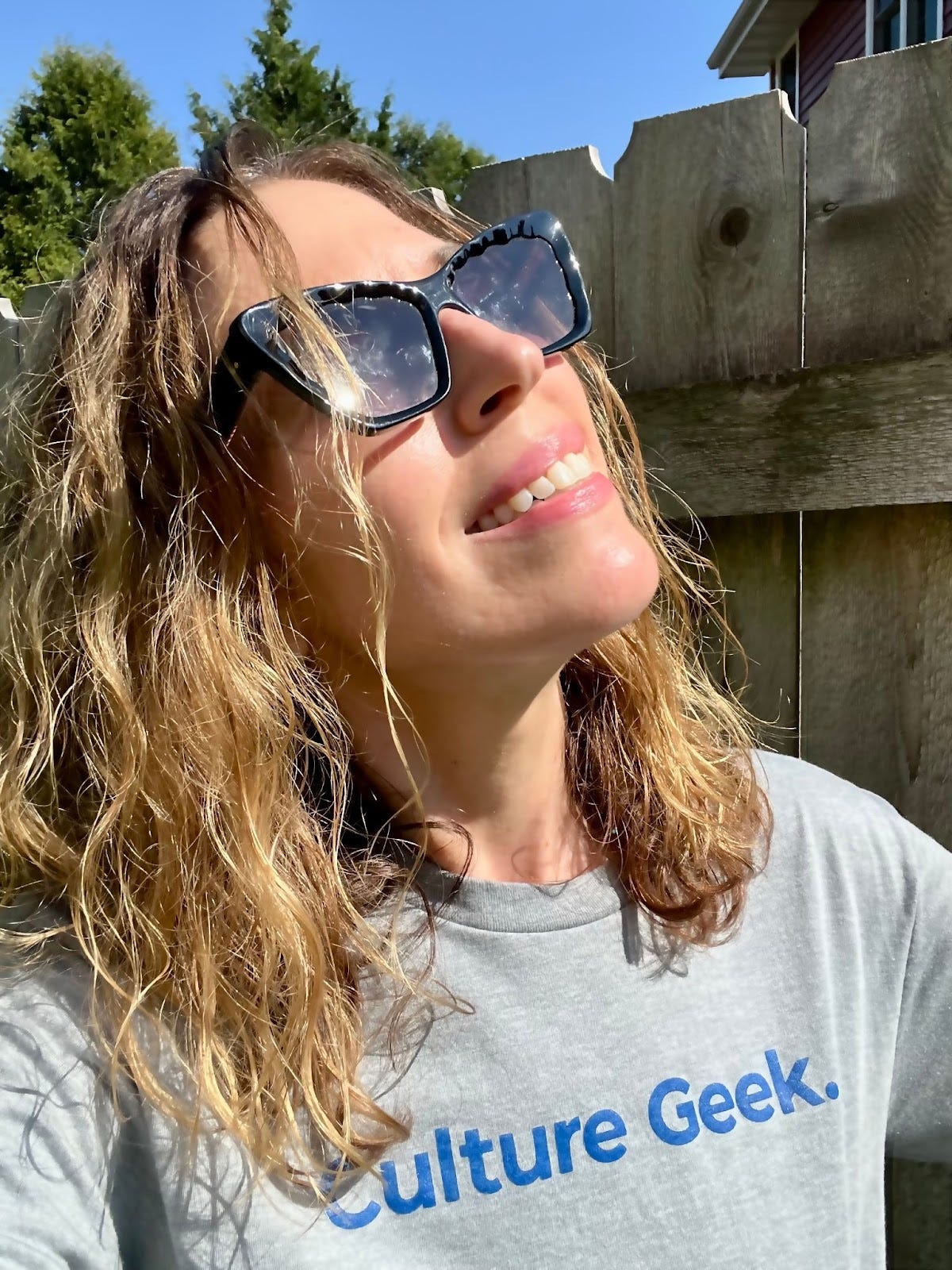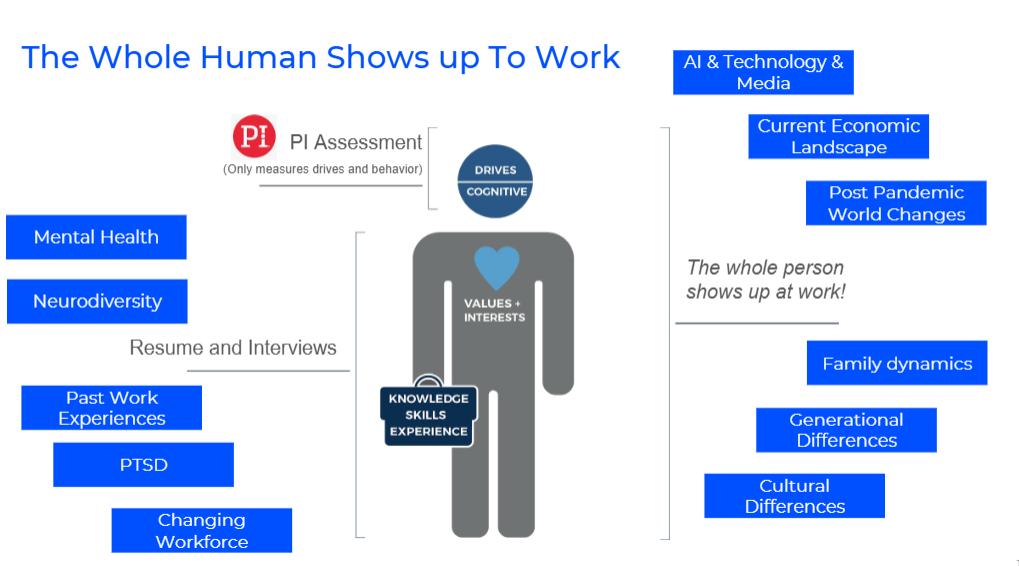Workplace cultures get healthier when trust, fairness, and belonging are built into daily routines, and people are treated as real humans with unique needs and circumstances. When everyone feels supported to care for their health at work, the whole team benefits.
Most of us can feel it — stress from work shows up in our bodies, our sleep, our families. And when you think about the time we spend working, it makes sense. Full-time workers in the U.S. average about 8.4 hours a day during the week and even 5.6 hours on weekends, based on the latest U.S. Bureau of Labor Statistics [archived link]. That’s more time working than time spent on anything else, and that’s only the average.
Most discussions about workplace stress are about adapting to it — or recovering from it. But why not help by building a culture of health within workplaces? This is where organizational culture comes in.

Last month, I attended a CultureCon USA two-day event on organizational leadership in Madison, WI (thank you Zach Blumenfeld for the invite!). I’m excited to share some of what I learned. This health science nerd is also a culture geek, and I have a feeling many of you are too.
⚖️ Health Equity Alert ⚖️
Before we discuss the ideas for making work culture healthier, it’s essential to acknowledge that the burden of work has never been fairly shared. That’s especially true for physically taxing manual labor or high-risk work [archived link] in critically important areas such as construction, agriculture, transportation, law enforcement, and direct care. The inequities show up in higher rates of injuries. Work-related deaths [archived link] are more likely to impact men, especially Hispanic or Latino workers. And work-related incidences of violence are highest among Black workers. Safety inequities may rise as home health aides are expected to become the largest U.S. occupation by 2032. This female-dominated sector has one of the highest injury rates, which includes injuries due to violence.
With brothers in the trades, I saw firsthand how their career paths took a larger toll on their bodies than mine or my husband’s did on us, while working behind computer screens. Legal protections with urgently needed improved oversight [archived link] are crucially important to keep workers safe. It’s also essential to care for people, even when they may no longer be able to do the work. Something everyone can do is respect and honor the people who show up to do the hard work that makes our lives possible, but too often goes unseen and undervalued. (I consistently have to remind myself to pause and do this because it’s not a universal norm in a fast-paced, low-touch culture.)
➡️ Why culture matters for health (and everything else)
“Culture isn’t fluff,” said Abigail Epane-Osuala, Chief Culture & Belonging Officer, HR Strategy at GE HealthCare. “It’s a force multiplier,” she said, explaining how culture shapes everything that happens within an organization. So if we want to make workplaces healthier, then culture is an important place to start, beginning with creating a sense of belonging.
A sense of belonging is an essential human need that doesn’t disappear when we switch into work mode. It matters for both health and well-being [archived link]. When people feel a part of something, they’re more likely to be cared for by others and themselves — and more likely to feel committed to caring for others, too.
But fostering belonging at work takes work — “DEI is culture work,” Epane-Osuala pointed out. “It’s not a standalone activity or some event or flavor of the month,” she explained, “DEI, culture, and a sense of belonging has to be embedded in everything.”
Key takeaway: Supporting health and belonging is an ongoing practice. There’s no one-and-done when it comes to culture work.
So let’s dive deeper into what culture work involves.
➡️ Organizational justice is key to culture change
Building a healthier culture requires change, but organizational change for the better is hard, sometimes painfully so. The key to having a “change-ready culture” is paying attention to organizational justice, explained Joe Plasterer and Mel Starkweather from Cirrus Change Readiness.
A just organization is one that’s fair, respectful, and transparent. People feel understood. And they generally feel like, “Yeah, that makes sense,” when it comes to policies and decisions. With only 36% of workers reporting high trust within their workplace, according to survey statistics they shared, trust-building is urgently needed.
Key takeaway: It’s the “perceived” justice that really matters. Leaders need to go beyond metrics or checked boxes to gain a deeper understanding of what workers are actually experiencing. That means not only welcoming feedback, but being grateful for it. And it means creating safe spaces for team members to share openly. Most people fear speaking up for both practical and social reasons. A workplace can’t become healthier if problems or issues aren’t known or talked about.
➡️ Appreciate different work styles
Alyson Mckinster and Dr. Ann Newman showed how behavioral assessments can help cultivate belonging. Creating healthier group dynamics that promote belonging starts with getting to know yourself better. They had the audience take a Predictive Index quiz. There are 17 unique behavioral patterns based on differences in needs, values, and motivations. (Even at 50, I learned something new.) Once we understand ourselves, it becomes easier to appreciate our differences.
While the differences themselves are neither good nor bad, Mckinster and Dr. Newman pointed out that the combination of differences is the secret sauce. Having diverse perspectives on a team is like going from checkers to chess, they explained. When people understand how important diversity is, they’re more likely to face the challenges of working together more constructively — because yeah, it’s not always easy working with someone who doesn’t sync with you.
Key takeaway: Look for flexible and creative ways to balance out each team member’s strengths and weaknesses while valuing everyone’s contribution.
Note: People are much more than any personality or behavior type. They shared this graphic showing examples of many other factors that influence our behaviors. We all show up to work carrying different things, including many that aren’t visible or known.

Graphic from CultureCon session “Using Behavioral Assessments to Strengthen Conversations and Cultivate Belonging” by Aly Mckinster (Wipfli) and Dr. Ann Newman, presented August 6, 2025.
➡️ Seeing the WHOLE person has a whole lotta benefits
You know when you hear someone speak who just really gets it? It was a delight to listen to Alan Huynh, Head of Growth at Meeko Health, present in sessions talking about burnout and psychological safety. Here’s some insight he shared.
Good things happen when we see workers as humans.
✅ No more hiding → more confidence
✅ No more pretending → more energy
✅ Real support → more able
When you see the whole person, they feel safer. In turn, they’re more empowered to engage and make connections. The beauty is that the whole process reinforces itself.
Key takeaways:
✅ Appreciate the WE in WEllness to make workplace cultures healthier.
✅ Healthy connections are force multipliers — we all do better when we all do better (Paul Wellstone’s timeless words).
➡️ Build health into the day
Most people spend their peak wakeful hours working. During winter, you might spend all your daylight hours working too. And after work? For many of us that’s when the next shift begins — errands, caregiving, chores, personal emails, and relationships.
It’s not really fair to have people ignore all their needs during the day and then expect they can just catch up taking care of themselves after work, pointed out Natasha Nikolaeva, CEO of STRETCHIT. She recommended incorporating health-supporting habits into the work culture throughout the day. Her team includes stretch sessions before meetings.
Alicia Archer, STRETCHIT’s trainer, kicked off Day 2 at CultureCon with a calming (and invigorating!) stretch session, like shown in this video:
Key takeaways: Do people feel safe? Do they know their boundaries? Do they know they need to rest? These are questions Nikolaeva asks when thinking about how workdays might need to change to become more health supportive. Consistency, clear expectations, and “less reactionary stuff” also promote healthier work environments, added Huynh.
➡️ Supportive cultures are good for business
Oftentimes, a supportive work culture is talked about as if it’s a corporate nicety. This makes getting leadership buy-in a harder case to make. And when something is seen as a nice extra, it’s more likely to fall by the wayside when times get tough.
A supportive work culture needs to be rebranded as good for business — because it is! I learned about this in a session presented by Jason Bowes from Human Synergistics.
Like me, you may have seen this to be true in your work experiences. Still, I was surprised by how important researchers have found it to be true. Being supportive of others ranked as the second most important behavioral norm that boosted team performance (only after integrity). A supportive culture is one where teammates support each other and invest in healthy growth for everyone. That’s exactly the culture here at Those Nerdy Girls, and it’s truly a joy to be part of!
Many of us are struggling just to find work, especially after the unprecedented layoffs in public health, research, and social services. Even if you’re fully employed, who isn’t worried about job loss? It’s a good idea for all of us to check in with each other, support inclusive networking, get creative, and learn ways to support mental health if you or someone you know finds themselves out of work (and not by choice).
More to read
How to Deal with a Layoff: Tips From Mental Health Professionals


